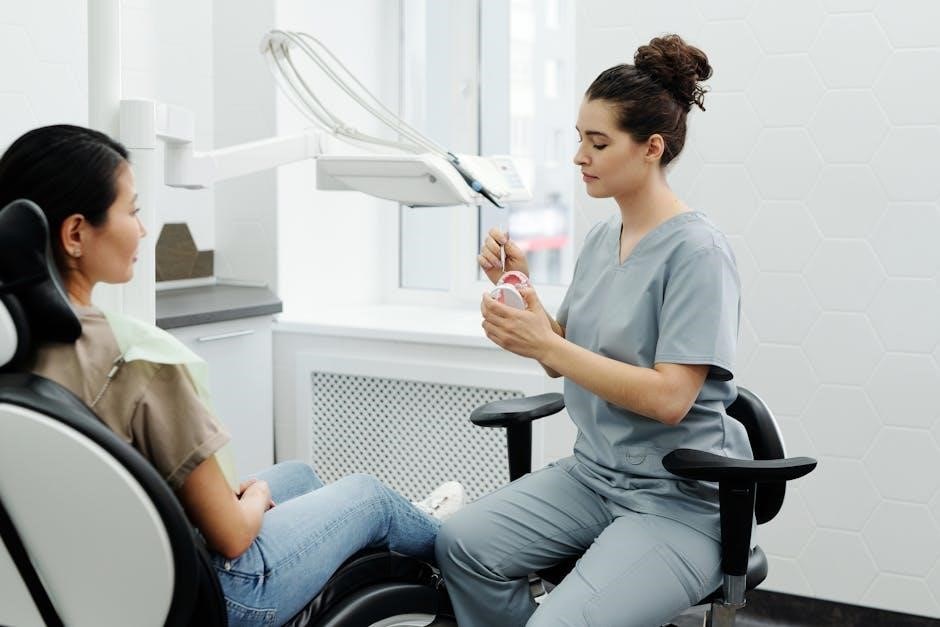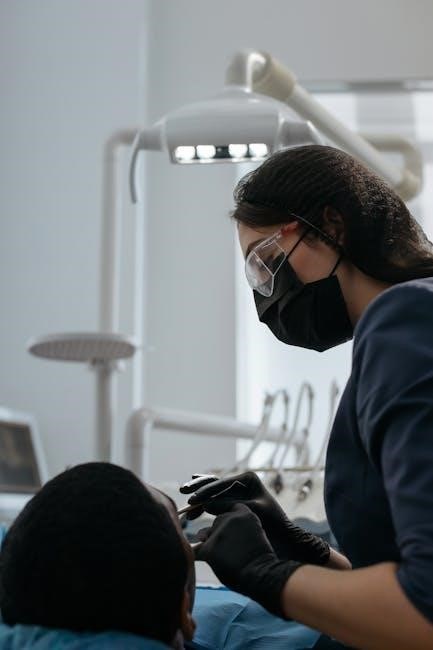
medical assistant cover letter pdf
Medical Assistant Cover Letter: PDF Guide

Crafting a compelling medical assistant cover letter is crucial. A PDF guide helps structure it effectively. It ensures proper formatting and readability, showcasing your qualifications professionally. This attention to detail demonstrates your commitment and suitability for the medical assistant role.
Cover Letter Importance for Medical Assistants
In the healthcare sector, a medical assistant cover letter is more than a formality; it’s a critical tool. While a resume showcases skills and experience, a cover letter reveals your personality, enthusiasm, and specific interest in the role and the organization. It allows you to tell your story, highlighting your unique approach to patient care and personal values, which can be the deciding factor when hiring managers are conflicted.
A well-crafted cover letter demonstrates your genuine interest, setting you apart from other candidates. It’s an opportunity to expand on your resume, emphasizing how your contributions have positively impacted patients and medical teams in previous roles. Moreover, it addresses why you’re drawn to this specific position and company, perhaps aligning with their mission statement. By showcasing your motivation to learn and transferable skills, especially those that can’t be taught, like communication and teamwork, you present yourself as a valuable asset.
Even if not explicitly required, a cover letter demonstrates your enthusiasm and genuine interest, potentially leading to more interview opportunities.
Key Elements of a Medical Assistant Cover Letter

A compelling medical assistant cover letter comprises several key elements, starting with your contact information and a professional greeting. This ensures the hiring manager can easily reach you. Highlight your relevant skills, emphasizing both technical abilities like drawing blood and crucial soft skills such as patient care and communication.

Showcase your ability to assist with examinations, take patient histories, and provide compassionate care. Emphasize your positive impact and achievements in previous roles, quantifying them whenever possible to demonstrate your value. Address your motivation for applying and highlight transferable skills applicable to the medical field, such as communicating with anxious patients or coordinating procedures.
Tailor your cover letter for each application, researching the specific clinic or hospital. Mention something about the clinic that resonates with you; this shows genuine interest. Conclude with a concise summary of your qualifications and a thank you for their time. By including these key elements, you’ll create a strong and effective cover letter that stands out.

Contact Information and Greeting
The top of your medical assistant cover letter should prominently display your contact information. Include your full name, address, phone number, and a professional email address. Ensure this information is accurate and easily readable, allowing the hiring manager to quickly reach you if they wish to schedule an interview. This section establishes a clear and professional point of contact.
Following your contact information, begin with a formal greeting. If possible, address the cover letter to a specific person, such as the hiring manager or the head of the department. Research the clinic or hospital to find the appropriate name. If you cannot find a specific name, use a professional greeting like “Dear Hiring Manager” or “Dear [Company Name] Team”. Avoid generic greetings like “To Whom It May Concern.”
A personalized greeting demonstrates that you have taken the time to learn about the organization and are genuinely interested in the position. This attention to detail makes a positive first impression and shows your professionalism.
Highlighting Relevant Skills
In the body of your medical assistant cover letter, dedicate a significant portion to highlighting your relevant skills. This is your opportunity to showcase the qualifications that make you a strong candidate for the position. Carefully review the job description and identify the key skills and qualities the employer is seeking. Tailor your cover letter to directly address those requirements.
Focus on both technical and soft skills. Technical skills might include proficiency in taking vital signs, administering injections, assisting with examinations, and using electronic health records (EHR) systems. Soft skills are equally important and encompass qualities like communication, empathy, teamwork, organization, and problem-solving. Provide specific examples of how you have demonstrated these skills in previous roles or educational experiences.
Quantify your achievements whenever possible. For instance, instead of saying you have experience with patient care, state that you “provided compassionate care to over 50 patients daily, resulting in improved patient satisfaction scores.” By providing concrete examples and quantifiable results, you demonstrate the impact you can make in the role.
Patient Care Skills
When crafting your medical assistant cover letter, dedicate a specific section to emphasizing your patient care skills. This is paramount, as providing exceptional patient care is at the core of the medical assistant role. Highlight your ability to create a comfortable and supportive environment for patients, demonstrating empathy and understanding. Showcase your experience in assisting patients with various tasks, such as taking medical histories, explaining procedures, and preparing them for examinations.
Provide concrete examples of how you have gone above and beyond to meet patient needs. Describe instances where you effectively communicated with patients who were anxious or scared, reassuring them and addressing their concerns. Emphasize your ability to anticipate patient needs and proactively offer assistance.
Mention any specific training or certifications you have related to patient care, such as CPR or first aid. Detail your familiarity with infection control protocols and your commitment to maintaining a safe and clean environment for patients. By showcasing your patient care skills, you demonstrate your dedication to providing high-quality care and improving the patient experience.
Technical Skills
In your medical assistant cover letter, dedicating a section to technical skills is essential. Highlight proficiency in vital tasks like drawing blood, administering injections, and performing EKGs. Specify experience with electronic health records (EHR) systems, detailing the platforms you’ve used and your ability to navigate them efficiently. Emphasize accuracy in recording patient information and maintaining organized records.
Showcase your knowledge of medical terminology and coding. Mention any experience with laboratory procedures, such as collecting and processing samples. Detail your ability to sterilize equipment and maintain a sterile environment. Describe your familiarity with medical software and equipment, including diagnostic tools.
If you possess specialized technical skills, such as assisting with minor surgical procedures or performing specific diagnostic tests, be sure to highlight them. Quantify your skills whenever possible, such as the number of blood draws you’ve performed or the types of EHR systems you’re proficient in. By showcasing your technical skills, you demonstrate your ability to perform essential medical tasks accurately and efficiently.
Emphasizing Positive Impact and Achievements
When crafting your medical assistant cover letter, it’s crucial to highlight the positive impact you’ve made in previous roles. Don’t just list your responsibilities; showcase how your actions improved patient care, streamlined processes, or enhanced team efficiency. Quantify your achievements whenever possible, using numbers and data to demonstrate your contributions.
For instance, instead of saying “Assisted with patient care,” state “Improved patient satisfaction scores by 15% through compassionate care and efficient assistance during examinations.” Similarly, instead of mentioning “Managed patient records,” describe “Streamlined patient record management, reducing retrieval time by 20% and improving data accuracy.”
Highlight instances where you went above and beyond to provide exceptional patient care or support your team. Share examples of how you resolved challenging situations, implemented innovative solutions, or contributed to a positive work environment. Emphasize any recognition or awards you received for your outstanding performance. By focusing on your positive impact and achievements, you demonstrate your value to potential employers and set yourself apart from other candidates.
Addressing Motivation and Transferable Skills
In your medical assistant cover letter, it’s essential to articulate your genuine motivation for pursuing the role. Explain why you’re drawn to the healthcare field and why you’re specifically interested in the medical assistant position. Showcase your passion for patient care and your desire to contribute to a positive healthcare environment.
Highlight any transferable skills you possess that are relevant to the role, even if they’re not directly related to medical assisting. These skills could include communication, teamwork, organization, problem-solving, or customer service. Explain how these skills can be applied to the medical assistant position and how they can benefit the healthcare team.
For example, if you have experience in customer service, emphasize your ability to communicate effectively with patients, address their concerns, and provide exceptional support. If you have strong organizational skills, highlight your ability to manage patient records, schedule appointments, and maintain a clean and organized work environment. By showcasing your motivation and transferable skills, you demonstrate your potential to excel as a medical assistant, even if you have limited direct experience in the field.
Customization for Each Application
Avoid the common mistake of using a generic cover letter for every medical assistant application. Tailor each cover letter to the specific job requirements and the healthcare facility’s values. Research the clinic or hospital’s mission statement and incorporate elements that resonate with their goals.
Highlight skills and experiences that directly align with the job description. If the position emphasizes patient care, showcase your compassionate approach and ability to assist with examinations. If technical skills are crucial, detail your proficiency in drawing blood or managing medical records.
Mention specific aspects of the company that attract you, demonstrating genuine interest. This shows that you’ve taken the time to understand their organization and are not just sending out mass applications. Customization makes your cover letter stand out, conveying your sincere desire to contribute to their team. It increases your chances of getting an interview by showcasing your understanding of their needs and your ability to meet them effectively.
Avoiding Common Mistakes
Crafting an effective medical assistant cover letter is crucial, but several common mistakes can undermine your application. Avoid using a one-size-fits-all approach; customize each letter to the specific job and healthcare facility. Generic letters lack impact and demonstrate a lack of genuine interest.
Ensure your letter is concise and focused, ideally three to four paragraphs. Overwhelming the reader with excessive information can distract them from your most relevant qualifications. Omit mundane job duties and generic phrases, instead prioritizing notable healthcare achievements and experiences.
Proofread carefully for spelling and grammar errors, as these detract from your credibility. Utilize tools like Grammarly to help identify and correct mistakes. Avoid exaggerating your skills or experience; honesty is essential in maintaining trust and professionalism. Failing to highlight relevant skills and experiences can also weaken your application. Emphasize your patient care abilities, technical skills, and positive impact on previous medical teams to make a strong impression.
Conciseness and Focus
In crafting a medical assistant cover letter, conciseness and focus are paramount. Hiring managers often review numerous applications, so a succinct, well-organized letter that quickly highlights your most relevant qualifications is essential. Avoid lengthy paragraphs or unnecessary details that can dilute your message.
Prioritize your key skills and experiences directly related to the medical assistant position. Start with a strong opening paragraph that clearly states your interest in the specific role and why you are a suitable candidate. Focus on your patient care skills, technical abilities, and any achievements that demonstrate your positive impact in previous healthcare settings;
Use bullet points or short paragraphs to present your qualifications in an easy-to-read format. Each sentence should contribute to showcasing your value to the employer; Conclude with a concise closing paragraph expressing your enthusiasm for the opportunity and reiterating your contact information. By maintaining conciseness and focus, you ensure your cover letter captures the hiring manager’s attention and effectively communicates your qualifications.
Cover Letter Templates and Formatting
Selecting the right template and formatting is crucial for making a strong first impression with your medical assistant cover letter. A well-structured template provides a professional framework, ensuring your letter is easy to read and visually appealing. Choose a template that resonates with the healthcare industry’s expectations, balancing professionalism with a touch of modernity.
Pay attention to the formatting details, such as font style and size, margins, and spacing. Opt for a clean, legible font like Arial or Times New Roman, and maintain consistent spacing throughout the document. Use single-spaced paragraphs with a blank line between each paragraph to enhance readability. Ensure your contact information is prominently displayed at the top, followed by the date and the recipient’s details.
Consider using bullet points to highlight key skills and achievements, making them easily scannable for the hiring manager. A well-formatted cover letter template not only presents your qualifications effectively but also demonstrates your attention to detail and professionalism, increasing your chances of securing an interview.